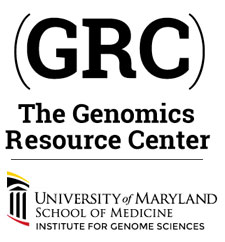We are pleased to announce that the GRC is the first PacBio certified service provider on the East Coast. This recently announced program is a partnership between PacBio and select sequence providers who have completed the certification process and offer the highest quality sequencing and analysis services using the PacBio technology. We offer a full range of PacBio services, including whole genome sequencing, transcriptome sequencing via Iso-Seq, targeted amplicon sequencing, and other customized applications. Our analysis team has expertise in genome assembly and annotation, variant analysis, transcriptome analysis, and base modification detection. We look forward to continuing our strong partnership with PacBio and offering the highest quality sequencing and analysis to our customers and collaborators.
As part of this new partnership, the GRC is proud to co-sponsor the SMRTest Microbe Grant Program. One lucky winner will receive sequencing and analysis services from the GRC. To enter, submit a short grant application detailing your project and how it would benefit from the long reads and high consensus accuracy of SMRT Sequencing. The deadline for submissions is June 27, 2015.
For more information on our full range of sequencing and analysis services, visit our Laboratory Services and Analysis Services pages. Please contact us if you have any questions or would like a quote.
If you are attending ASM 2015 next week, please stop by the IGS booth (#776) to learn more about the grant program and all of our sequencing and analysis services. See you in New Orleans!
